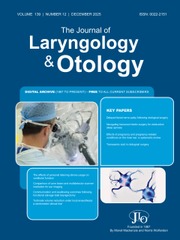No CrossRef data available.
Article contents
Understanding paediatric laryngomalacia: a study of social determinants and associated diseases
Published online by Cambridge University Press: 04 November 2024
Abstract
This study investigated the influence of socioeconomic factors on the incidence of laryngomalacia in paediatric in-patients.
Data from the 2016 Healthcare Cost and Utilization Project Kid Inpatient Database were analysed. Variables included zip code median income, race and/or ethnicity, primary expected payer and associated International Statistical Classification of Diseases and Related Health Problems 10th Revision codes in admission.
Lower median income zip codes showed a 6.4 per cent increase in laryngomalacia admissions, while higher-income zip codes had an 8.0 per cent decrease. Black patients exhibited a 24.5 per cent increase and Asian or Pacific Islander patients showed a 42.5 per cent decrease in laryngomalacia admissions. Medicaid and other government programme payers had a 22.1 per cent increase, while Medicare, private insurance and self-pay patients had decreases of 35.5, 20.9 and 55.7 per cent, respectively. Laryngomalacia was associated with a number of disease processes from a multitude of organ systems in a statistically significant manor.
Socioeconomic status, race, primary expected payer and co-morbid disease process significantly impact laryngomalacia admissions.
- Type
- Main Article
- Information
- Copyright
- © The Author(s), 2024. Published by Cambridge University Press on behalf of J.L.O. (1984) LIMITED.
Footnotes
Dean G. Kennedy takes responsibility for the integrity of the content of the paper


